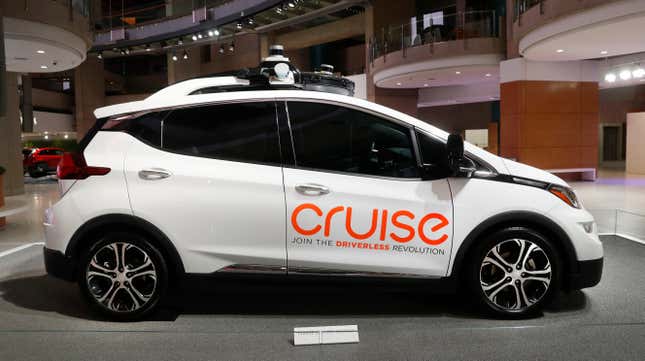
In yet another sign the autonomous vehicle industry was way too aggressive predicting widespread AV use by the end of the decade, GM subsidiary Cruise has delayed its commercial service, according to a company blog post, which was initially targeted for the end of this year. Instead, the company announced in the same blog post it will continue to expand testing in San Francisco.
This is good news for humanity, because, according to a recent report from The Information, their technology is nowhere near ready. Just one of many examples from that story:
Near collisions, where a backup driver has to take the wheel or hit the brakes to avoid a crash, are one of the biggest issues with Cruise cars. Several months ago Cruise vehicles were having such close calls—dubbed internally a “safety critical event”—once every 450 miles or so. For Cruise’s main fleet of several dozen cars in San Francisco, that translates to an incident at least several times a day.
Cruise’s delay reflects larger industry trends that AVs are extremely not ready for widespread use. Even the CEO of Waymo, widely regarded as an industry leader, admitted earlier this year driverless cars are still decades away from widespread adaptation and will probably never work in all conditions.
But my personal favorite is that Anthony Levandowski, one of the king scions of techno-futurism and former Waymo/Uber executive, is now working for a semi-autonomous driving company.
Billions upon billions of dollars are being invested in R&D for a technology more and more companies are admitting will be difficult to impossible to implement on any kind of scale any time soon. It sure sounds like we’re going to be in the semi-autonomous stage for an awfully long time.